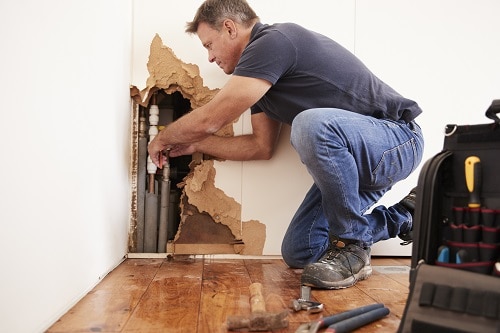Water damage is a homeowner’s worst nightmare. Whether it’s from a burst pipe, a leaky roof, or a natural disaster, the consequences can be devastating. But fear not, because in this comprehensive guide, we’ll walk you through everything you need to know about water damage restoration. When it comes to thorough and efficient cleaning services, you can always count on The CleanUP Guys to get the job done. From the initial assessment to the final touches, we’ve got you covered. So, let’s dive right in and learn how to revive, restore, and renew your home after water damage.
Understanding the Scope of Water Damage
Assessing the Damage
The first step in any successful water damage restoration project is to assess the extent of the damage. This involves identifying affected areas, determining the source of the water intrusion, and classifying the damage severity. Whether it’s a Category 1 clean water leak or a Category 3 contaminated flood, knowing the classification is crucial for the restoration process.
Safety First
Before you start any restoration work, prioritize safety. Ensure that the affected area is free from electrical hazards and turn off power sources if necessary. Additionally, wear appropriate personal protective equipment, including gloves, masks, and waterproof boots, to protect yourself from potential health risks.

Water Extraction and Drying
Once you’ve assessed the damage and secured the area, it’s time to remove excess water and moisture. This step is essential in preventing further damage and mold growth. Here’s what you need to do:
Extracting Water
Invest in professional-grade water extraction equipment like wet/dry vacuums and submersible pumps. Remove as much standing water as possible, paying close attention to carpets, flooring, and walls.
Dehumidification
After water extraction, use dehumidifiers to reduce humidity levels. Lowering the moisture content in the air is crucial for preventing mold growth, which can begin within 24-48 hours of water exposure.
Mold Remediation
Mold is a common issue following water damage, and it can pose serious health risks. Here’s how to handle mold remediation effectively:
Inspection and Testing
Hire a professional mold inspector to assess the extent of mold growth. Sampling and testing can help identify specific types of mold and determine the appropriate remediation methods.
Removal and Cleanup
Once mold is identified, it’s crucial to remove it safely. Use proper containment measures to prevent mold spores from spreading to unaffected areas. Moldy materials should be disposed of, and affected surfaces thoroughly cleaned and sanitized.
The CleanUP Guys
(773) 885-8528
Structural Repairs
With the water and mold issues addressed, it’s time to focus on structural repairs. Depending on the severity of the damage, this can include:
Drywall Replacement
Water-damaged drywall is often beyond repair and must be replaced. This involves cutting out the damaged sections, installing new drywall, and finishing with tape and joint compound.
Flooring Restoration
For hardwood or laminate flooring, water damage may necessitate replacement. In cases of minor damage, sanding and refinishing might be sufficient.
Roof and Ceiling Repairs
Address any roof or ceiling damage promptly to prevent further water intrusion. Leaky roofs can lead to recurrent issues if not properly repaired.
Restoring Your Home
With the structural aspects addressed, it’s time to restore your home to its former glory:
Painting and Finishing
Repaint walls and ceilings with fresh, mold-resistant paint. This not only improves aesthetics but also adds an extra layer of protection.
Flooring Installation
Install new flooring or refinish existing floors to give your home a fresh, clean look.
Final Inspection
Before considering the restoration complete, conduct a thorough inspection to ensure all issues have been addressed. Look for any signs of water damage, mold, or structural problems.
Preventing Future Water Damage
To avoid a repeat of this ordeal, take proactive measures:
Regular Maintenance
Schedule routine inspections of your home’s plumbing, roof, and foundation. Fix minor issues before they become major problems.
Install a Sump Pump
Consider installing a sump pump in your basement or crawl space to prevent water buildup during heavy rainfall.
Waterproofing
Apply waterproof coatings to basement walls and use sealants around windows and doors to prevent water intrusion.
Conclusion
Water damage restoration is a complex process that requires expertise and careful execution. By following this comprehensive guide, you can revive, restore, and renew your home after water damage effectively. Remember that safety should always be your top priority, and when in doubt, consult with professionals. With the right approach, you can leave your water-damaged woes behind and enjoy a refreshed and renewed living space.
In conclusion, when it comes to water damage restoration, it’s all about knowledge, preparedness, and taking swift action. Don’t let water damage define your home’s future. With the right steps and a commitment to thorough restoration, your home can be revived, restored, and renewed to its former glory.

Leave a Reply